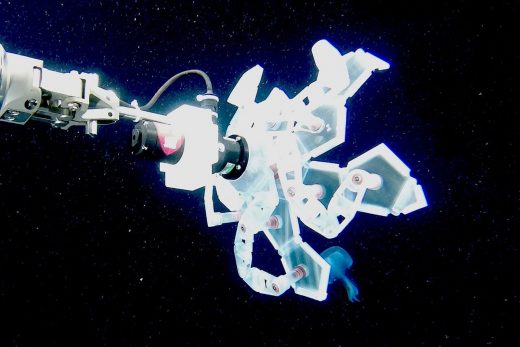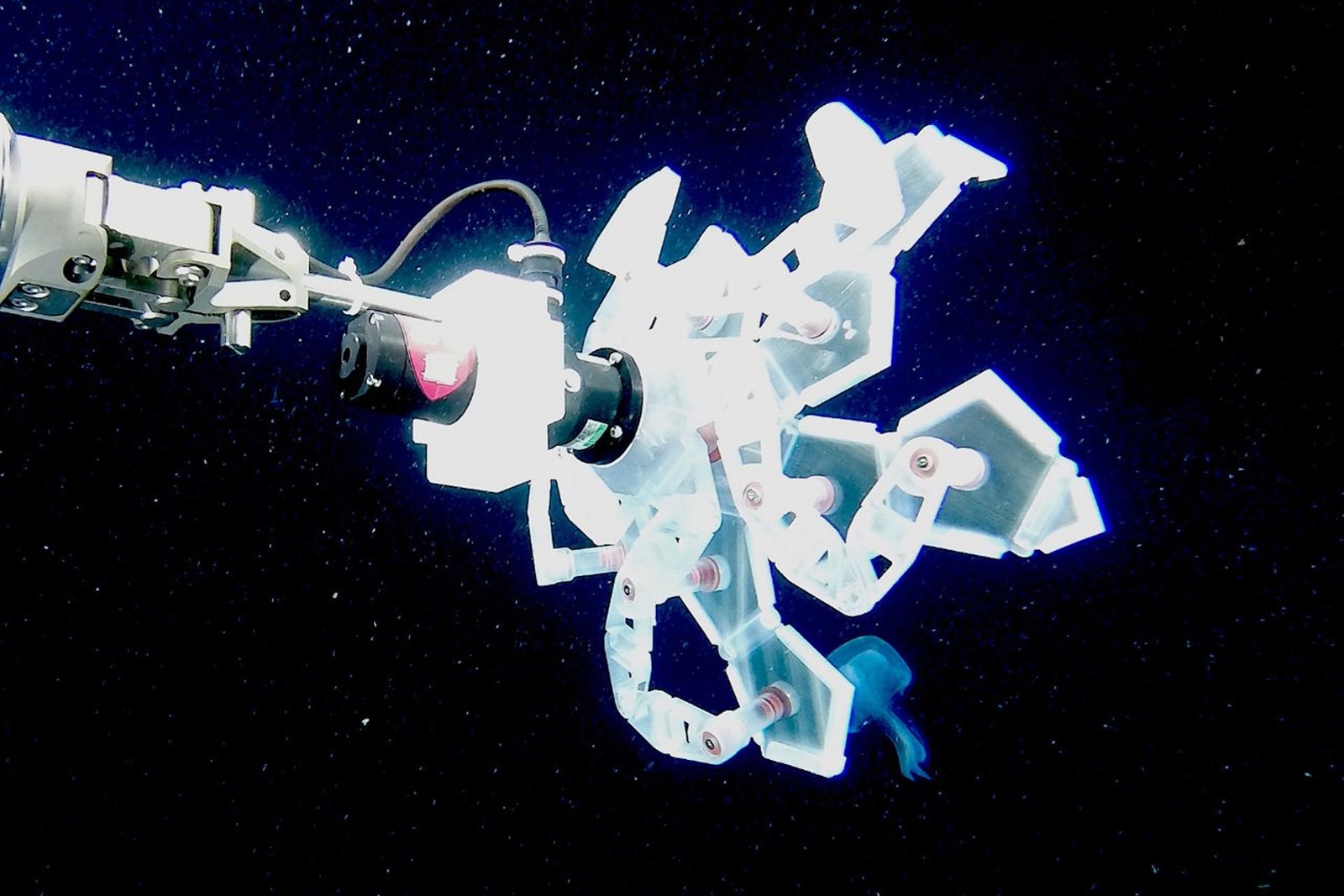Harvard’s robot arm can grab squishy sea animals without hurting them
As you might imagine, you can’t just grab extra-soft sea creatures like jellyfish or octopuses when you want to study them. Not if you want them to remain intact, anyway. Thankfully, researchers at Harvard’s Wyss Institute have a far more delicate solution. They’ve created a robot arm (the RAD sampler) whose petal-like fingers can quickly form a ball shape around an animal, capturing it without risking any harm. It’s simpler than it looks — it uses just a single motor to drive the entire jointed structure, so it’s easy to control and easier still to repair if something breaks.
To date, the arm has only been useful for catch-and-release experiments. In the future, though, biologists could outfit the machine with cameras and sensors to collect information about whatever’s inside the sphere, whether it’s the material composition, size or the genetic sequencing. If that happens, researchers could study fragile undersea critters in their native habitats and glean insights that wouldn’t be available above water or with dead specimens.
(34)




